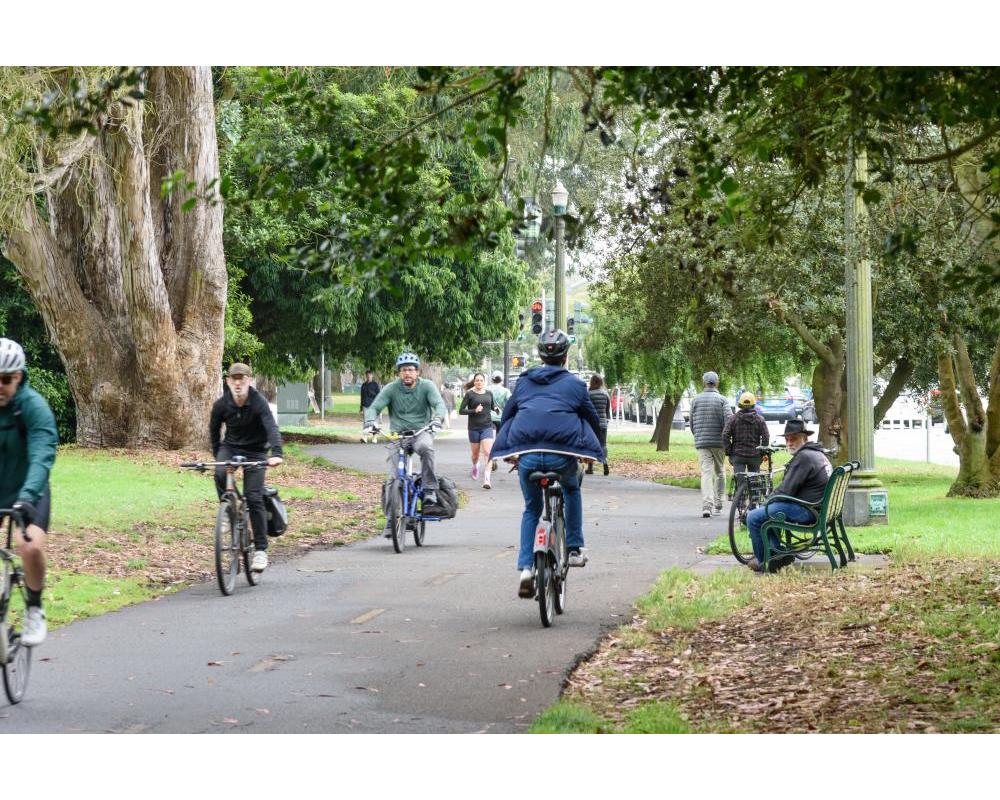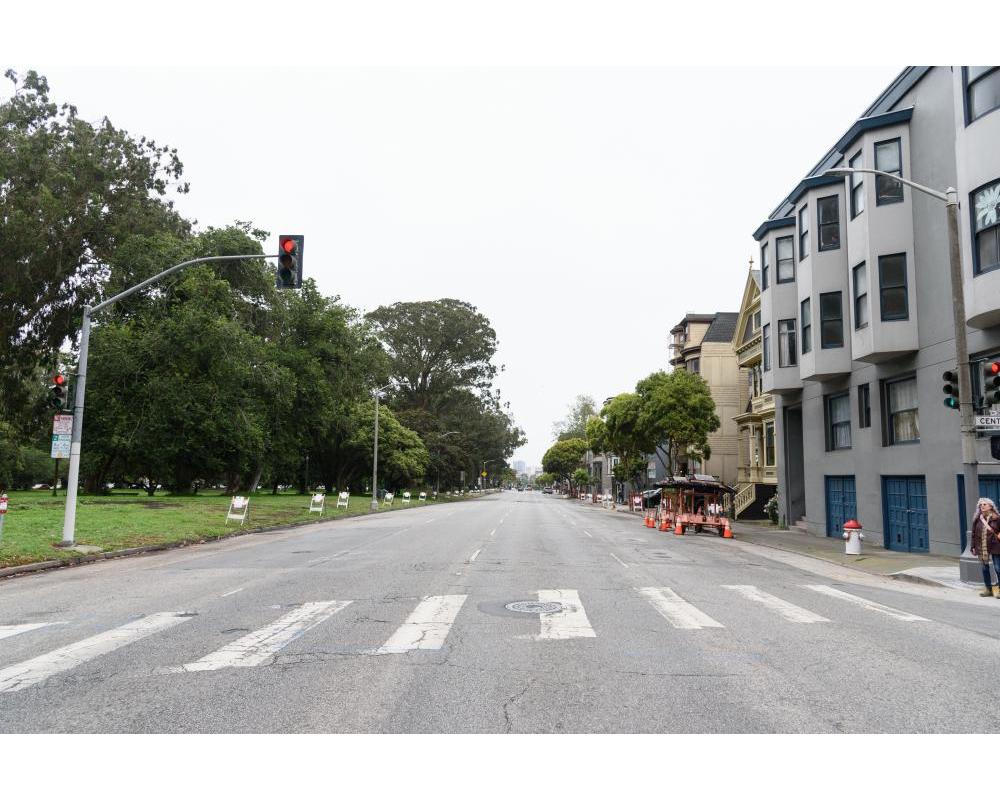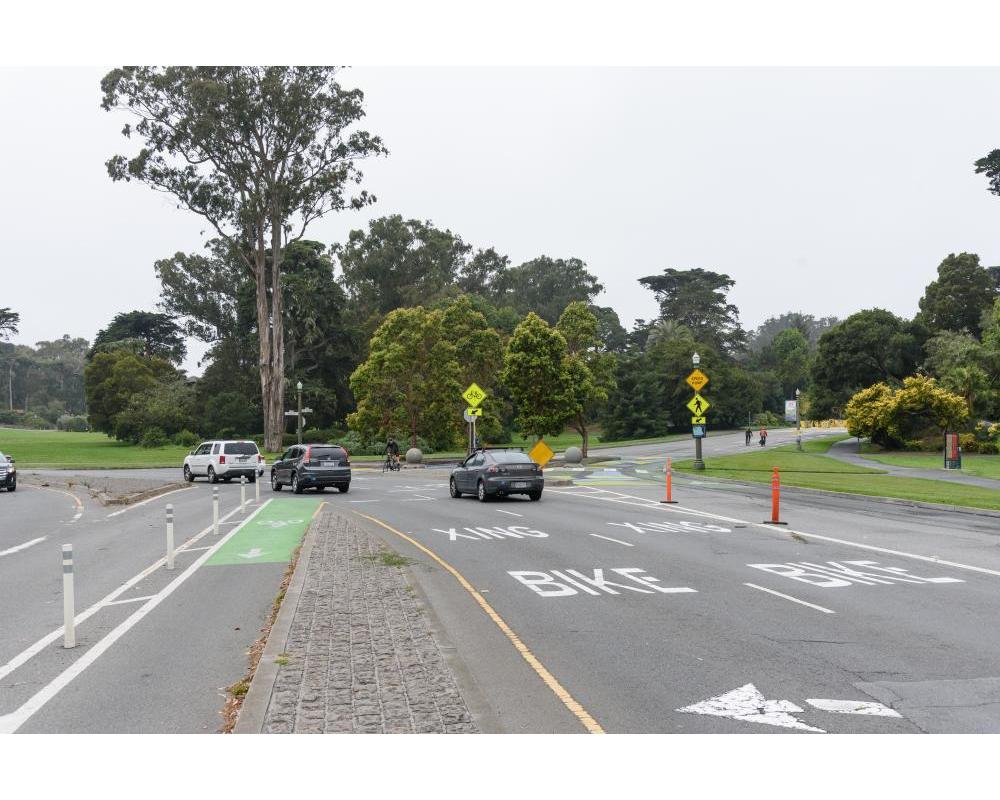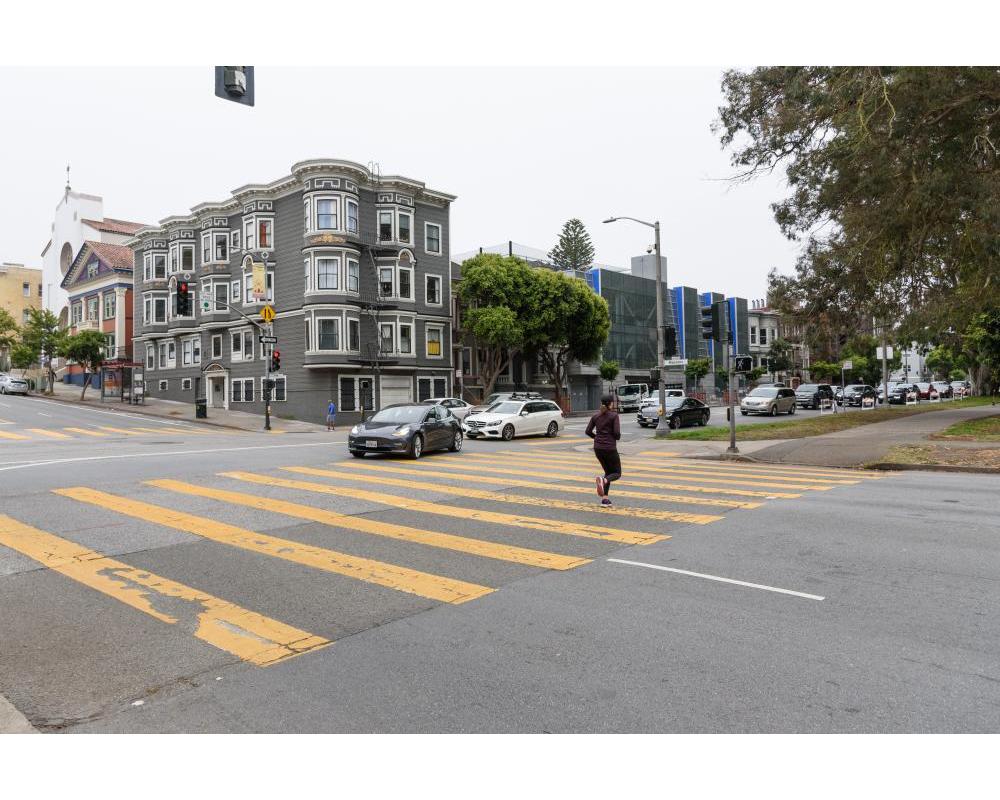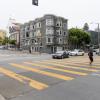Construction begins at Oak & Masonic this December
Work on the Oak Street Quick-Build Project is officially underway. Crews will begin improvements at Oak & Masonic in mid-December, with construction at this location continuing through January.
What to expect
• Temporary crosswalk and pathway closures with pedestrian detours
• Limited parking impacts on the north side of Oak Street for staging
• Minimal travel-lane disruptions, generally outside peak hours
What’s coming next
Repaving of Oak Street by Public Works begins in spring 2026, followed by installation of the protected bikeway and corridor-wide safety upgrades later in the year.
The Oak Street Quick-Build Project aims to improve safety and access for people walking and bicycling on Oak Street (between Stanyan Street and Baker Street) and JFK Drive (between Kezar Drive and Stanyan Street) and provide a new connection between Golden Gate Park’s JFK Promenade and the popular Wiggle bike route.
This project supports the implementation of the goals and priorities of the SFMTA Strategic Plan and supports San Francisco’s Vision Zero initiative. It is coordinated with several adjacent projects, including the Lyon Slow Street and SFPUC Panhandle and Inner Sunset Large Sewer Rehabilitation Project.
Goals and Objectives
The SFMTA’s initial goals and objectives for this project include the following, but may be modified based on the results of the planning and outreach phases:
- Upgrade pedestrian crossings and access to the Panhandle for people walking and bicycling from the Haight Ashbury-Neighborhood
- Add a physically-protected eastbound bikeway connecting the JFK Drive Promenade with the existing Oak Street protected bike lane at Baker Street
- Improve connections to and from Golden Gate Park for people bicycling on JFK Drive, including modifications at the Kezar Drive and Stanyan Street intersections
- Reduce vehicle speeds while keeping traffic moving, thereby reducing the likelihood of severe-injury collisions
- Address conflicts between those who walk, bike, and drive on the corridor
What is a quick-build project?
Quick-build projects focus on implementing safety improvements on streets identified on San Francisco's Vision Zero High-Injury Network.They include adjustable and reversible traffic safety improvements that SFMTA crews can install quickly. Unlike major capital projects that may take years to plan, design, bid, and construct, quick-build projects are buildable within weeks and months. They are intended to be evaluated and reviewed after implementation to inform adjustments and lessons for future projects.
Typical quick-build type improvements include:
- Roadway paint, traffic delineators, and street signs
- Parking and loading (curb management) adjustments
- Traffic signal timing changes and small hardware modifications
Background
The Panhandle’s shared-use path is a high-quality off-street path shared by people walking and bicycling – a central piece of San Francisco’s active-transportation network. Though the number of peak-hour downtown commuters has dropped, it is still a busy crosstown route. When the path is less active, the difference in speed between users – particularly those walking and bicycling – is higher, resulting in more potential conflicts. Now that the JFK Drive Promenade car-free space has been made permanent and continues to be very popular, the project would provide additional active transportation space for those traveling to Golden Gate Park from neighborhoods across San Francisco and improve the connection between the Panhandle and Golden Gate Park.
Neighbors in the surrounding area have expressed interest in studying adding on-street bicycle facilities adjacent to the Panhandle, to make the existing shared-use path more comfortable for a variety of users and to reduce motor vehicle speeds along Fell Street and Oak Street. Ideally, on-street bikeways would attract faster, travel-time-sensitive bike riders away from the multi-use path to create a safer experience for pedestrians and leisure riders. Curbside bike lanes were added in 2012 on Fell and Oak streets between Scott and Baker streets to improve connections between the Panhandle bike path and the Wiggle and the protected bikeway on Fell Street was extended to Shrader Street in 2020. Adding a protected bike facility adjacent to the Panhandle along Oak Street will give people bicycling a parallel eastbound option, completing the connection between Golden Gate Park and the Wiggle.
